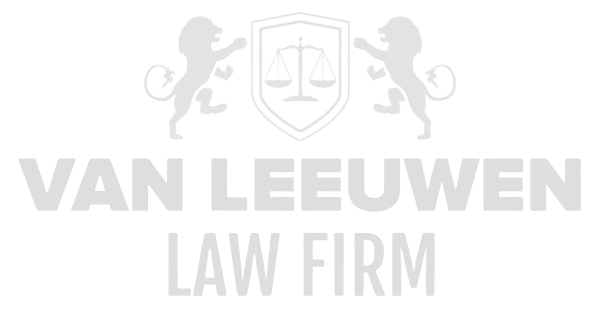Advising on regularly recurring privacy and cybersecurity issues is undeniably a cornerstone within a robust Privacy Data Framework. While occasional projects and one-off legal assessments are valuable, it is the day-to-day recurring processes—such as data sharing, running marketing campaigns, and handling customer complaints—that determine operational effectiveness and compliance at the workplace. This makes advice on these recurring topics doubly important: on the one hand, it removes legal and technological barriers, and on the other hand, it ensures continuity and scalability in privacy and security measures.
An intelligent advisory approach combines in-depth knowledge of the GDPR, ePrivacy guidelines, and relevant national legislation with pragmatic process optimization and technical best practices. By embedding advice not only in response to problems but also as a structural part of processes, a culture is created in which compliance occurs organically. This makes organizations agile enough to embrace new marketing initiatives, handle complex customer requests swiftly, and manage data flows efficiently, all while ensuring the protection of personal data is not compromised.
Data Transfers: Legal Grounds and Technical Safeguards
When it comes to transferring personal data, choosing the correct legal ground is central. Whether the transfer is within the European Economic Area or beyond, compliance with GDPR Articles 44–50 requires clear justification and documentation: for instance, the use of standard contractual clauses, approved codes of conduct, or explicit consent from data subjects. This legal foundation, along with due diligence on the recipient, forms the basis of every transfer.
Additionally, the technical implementation of safeguards is crucial. Data encryption during transit, end-to-end security of API connections, and strict access control with multi-factor authentication ensure that transfers do not lead to unauthorized access. Automated logging and monitoring of all transfers provide an audit trail essential for accountability and incident investigation.
Finally, advice on transfer processes should include: who is responsible for verifying the validity of grounds, how internal approval workflows are handled, and what escalation mechanisms are in place in case of deviations? Clear process descriptions, linked to task and role descriptions, ensure that employees know when to ask for consent, which templates to use, and how to report exceptional situations.
Marketing Campaigns and Contests: Consent, Transparency, and Minimal Data Processing
Marketing campaigns and contests are powerful marketing tools but bring privacy complexities. Advice begins with mapping out the processing purposes and determining the correct legal basis—often consent or legitimate interest. When consent is required, it must be freely given, informed, and revocable, which must be documented in contractual and technical terms and tested through user-friendly consent dialogs.
Transparency towards participants is essential. Every communication channel—from email to social media and website banners—must provide clear information about the purpose, retention period, and any data exchange with sponsors or third parties. Advisory services include drafting example texts, banner scripts, and privacy statements that comply with readability criteria and are tested by the data protection officer.
Minimal data processing is key: only strictly necessary personal data should be requested. Advice includes checklists for data anonymization, pseudonymization, and retention periods. Additionally, advice is provided to development teams for the technical implementation of campaign management tools, ensuring automatic data deletion after the contest ends, thereby minimizing the risks of unnecessary data storage.
Direct Marketing and Data Sharing: Segmentation, Profiling, and Opt-Out
Direct marketing often utilizes profiling and segmentation to target specific audiences. Advice begins with validating the legal grounds, such as explicit consent or legitimate marketing interest, and assessing the proportional use of profiles. This includes guidelines for compiling customer profiles, obtaining consent for specific marketing categories, and setting up opt-out and preference management.
When sharing data with external marketing partners, due diligence is essential: contractual agreements must include data processing agreements outlining the conditions for secure transfer, reuse, and access. Technical safeguards like API key management, IP whitelisting, and rate limiting prevent misuse and ensure controlled data flows.
Organizational advice focuses on setting up a central marketing preference register and integrating opt-out mechanisms at all customer contact points. This ensures that customers can be confident that opting out of marketing communications is immediately reflected across all systems. This prevents violations of the right to be forgotten and strengthens customer trust.
Data Retention and Retention Periods: Policy, Implementation, and Audit
A sound data retention policy defines the maximum storage period for each category of personal data, based on legal obligations, contractual requirements, and business necessity. Advice includes creating a retention period matrix, which describes the legal grounds, retention period, and responsible department for each processing purpose. This document serves as a guide for implementation and auditing.
The technical implementation of retention periods requires automated workflows in both operational databases and backup systems. Advice includes guidelines for lifecycle management, with procedures for periodically reviewing, archiving, anonymizing, or deleting data. These workflows are tested in end-to-end scenarios to prevent errors or delays in the process.
Finally, periodic audits and monitoring of data retention are crucial. Advice establishes an audit cycle, including sampling, reporting, and escalation routes for exceeding retention periods. Collaboration with internal or external auditors ensures verification of both technical logs and policy compliance, defining corrective actions as necessary.
Customer Complaints: Processes, Response, and Feedback
Handling privacy and security complaints from customers requires a streamlined and transparent process. Advice includes setting up a complaints portal that automatically classifies and forwards notifications to the appropriate officers, with established response times and escalation mechanisms. Each complaint ticket contains metadata about the nature, involved personal data, and status, making it easy to track and report.
Once received, a thorough analysis follows: validated complaints are triaged based on severity and scope, after which containment or corrective measures are implemented. Advice includes standard scenarios for common complaints—such as erroneous email consent or requests for data portability—along with clear response letters and legal checklists. This accelerates resolution and ensures consistency.
Finally, feedback and reporting are essential to recognize patterns and address systemic issues. Advice includes KPIs such as average resolution time, customer satisfaction, and the number of repeated complaints. Lessons learned sessions with involved departments lead to process optimizations, employee training, and adjustments to policy documents, ensuring continuous improvement within the organization.









